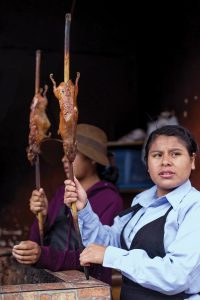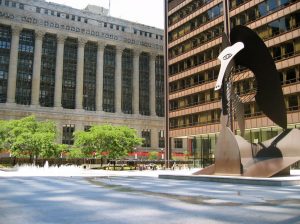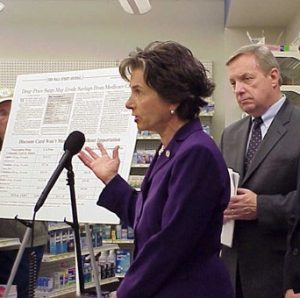Story by Evan Minsker
Oct. 15, 2008 – When walking by Margate Park in the Uptown neighborhood, one sees a small, fenced-in area. Inside, there are dozens of plants ranging from gentle yellow coneflowers and New England asters to prickly blue globe thistles and prairie blazing stars.
This place doesn’t offer the same refined charm as a formal garden, but it couldn’t be more natural. After blocks of the typical park scenery — grass, trees and dirt — this garden looks like it has been torn out of a prairie. It’s a native plant garden, offering a glimpse of what Chicago looked like before there were skyscrapers or even paved roads.
“They don’t look like your grandma’s rose garden,” said Ned Read, coordinator of the Carmen-Winona Garden Club.
It was Read who initially decided to put a native plant garden in Margate Park. After the park’s play lot was moved to another location, the Carmen-Winona Block Club decided to step up and plant a garden there. The initial idea was for perennials, but Read got people excited about a native garden instead.
“The plants themselves are robust,” Read said. “They survive droughts better than most plants. That means we have advantages in keeping them alive. Out there, we don’t have a ready source of water.”
Native gardens also invite native animals, which creates a more natural ecosystem. Read says that Margate Park now sees more monarch butterflies and migrating birds than ever before. Maryam Barrie, who maintains a native plant garden at her home, only has to look outside to see evidence of the impact native plants have on local animals.
“I’m sure we got the birds and the hummingbirds and the butterflies we get because there’s so much native stuff around the porch,” Barrie said. “They attract attention from the birds that are passing through, who stop by to feed on the plants. It all sort of goes together.”
But there are more benefits to native plants than easy upkeep and attracting wildlife. Pat Clancy is the secretary of the Greater DuPage Chapter of Wild Ones , an organization dedicated to native plant landscaping. According to Clancy, native plants and grasses are perfect to help prevent flooding and water damage to homes.
“Because of their deep roots, they absorb a whole lot more water,” Clancy said. “A turf lawn has roots that are about one inch deep, as opposed to some of the native grasses that have roots that go several feet down.”
Environmental Protection Specialist Danielle Green with the United States Climate Partnership Association says that picking the right native plant requires forethought, especially when it comes to rain gardens.
“If you have a spot that’s very wet or shady or sunny, you use a native plant that would keep coming back and thrive,” Green said. “In the same way that you pick the plants that suit the shade, when you’re doing a rain garden, you like to have plants that like to have wet feet. With native plants, you pick the right plant for the right place, so you’re not fighting against nature but working with it.”
Read says that you can spot native plants throughout Uptown already, but he would like to see more native plants used to support the natural environment. However, he warns that the aesthetic of native plant gardens isn’t for everybody.
“If you just try to recreate a prairie, it would just look unkempt and would probably disturb some people who didn’t know anything about the plants,” Read said. “There’s a learning curve involved in appreciating them, but I’d be all in favor of more native plant gardens in the city.”
Categories:
Civic Associations & Community Groups Eco & Environment Editor’s Choice North Side Parks & Public Land Public
Tags:
garden green native plants uptown
-
Charles Raymond said, Wed Oct 15 20:53:00 UTC 2008:
If only more neighborhoods would follow this lead – the more greenery the better!






Be First to Comment